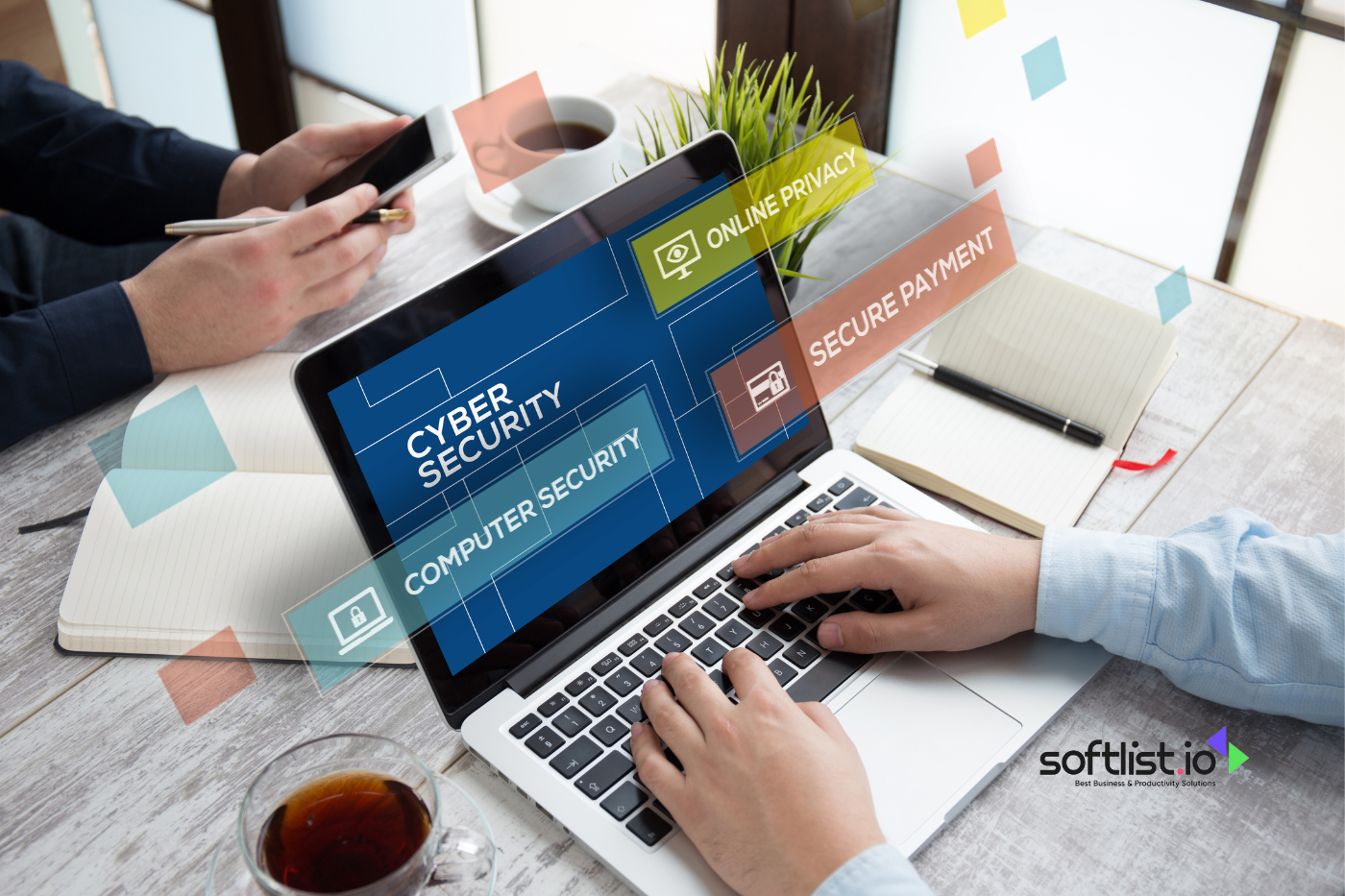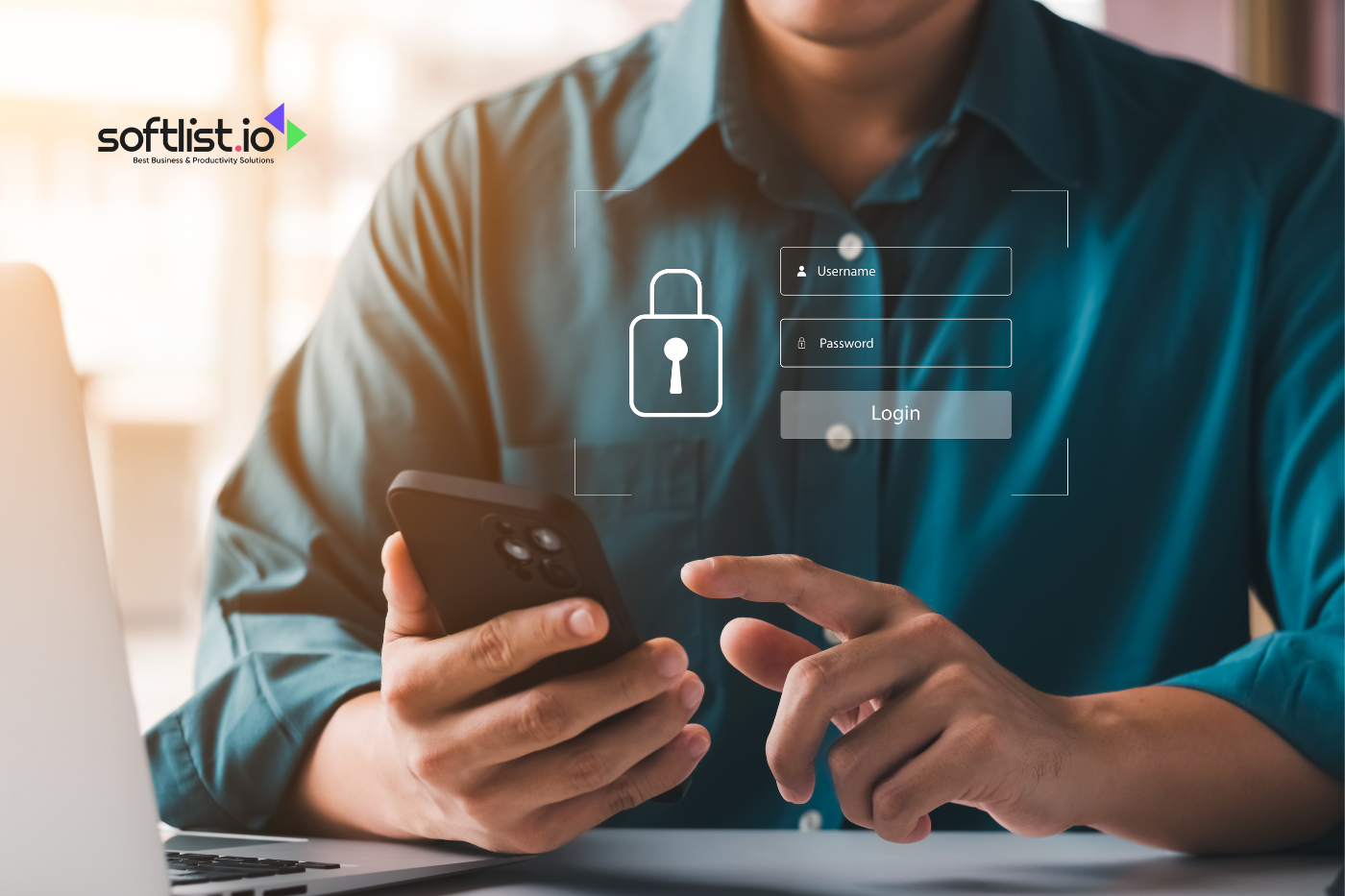Cyber threats are changing quickly, which puts businesses at great risk. Still, a lot of businesses aren’t fully ready to deal with these threats because they don’t realize how complicated they are or how much damage they could do.
Ignoring the need for strong cybersecurity can cause major data breaches, loss of money, and damage to identities.
Let’s take a look at the most important safety tools that can help keep your business safe from these threats. We are going to talk about easy and useful ways to keep your business and info safe.
What are Cyber Security Solutions?
Cybersecurity solutions are tools and practices designed to protect computers, networks, and data from unauthorized access, attacks, and damage. These solutions include things like antivirus software, firewalls, and encryption technologies. They help prevent cyber threats such as hacking, malware, and phishing attacks.
Effective cybersecurity also involves regular updates, monitoring systems for suspicious activities, and educating users about safe online behaviors. The goal is to safeguard information and technology systems in both personal and professional settings.
Different Types of Cybersecurity Threats

Source: Canva Pro
Cybersecurity threats constantly evolve, presenting ongoing challenges for individuals and organizations seeking to protect their digital assets.
These are some of the most common types of cybersecurity threats:
- Malware: This broad category includes any malicious software designed to harm or exploit any programmable device, service, or network. Malware types include viruses, worms, trojans, and ransomware.
- Viruses and Worms: These programs can replicate themselves and spread to other devices, often corrupting data or taking over system resources.
- Trojans are deceptive programs that enter systems disguised as legitimate software, allowing hackers to steal data or cause damage.
- Ransomware: Malicious software that encrypts the victim’s data and demands payment in exchange for the decryption key.
- Phishing: This attack involves tricking the victim into revealing sensitive information (such as passwords or credit card numbers) by pretending to be a trusted entity in electronic communications. It often involves sending fake emails or creating fake websites.
- Man-in-the-Middle (MitM) Attacks: These occur when attackers insert themselves into a two-party transaction or communication. After interrupting the traffic, they can filter and steal data.
- Denial-of-Service (DoS) and Distributed Denial-of-Service (DDoS) Attacks: These attacks aim to overwhelm systems, servers, or networks with traffic, rendering them inaccessible to intended users. DDoS attacks come from multiple compromised devices, often distributed globally.
- SQL Injection: This attack involves inserting malicious SQL statements into an entry field for execution (e.g., to dump the database contents to the attacker).
- Zero-Day Exploit: This occurs when attackers exploit a newly discovered vulnerability before developers have had the opportunity to address it. These vulnerabilities are called “zero-day” because they have been known to the public for zero days.
- Insider Threats: These threats come from individuals within the organization who have inside information concerning the organization’s cybersecurity practices, data, and computer systems.
- Advanced Persistent Threats (APTs): These are prolonged targeted attacks where attackers infiltrate a network and remain undetected for a significant period of time with the intent to steal data rather than cause damage.
- Cryptojacking: Attackers use someone else’s computing resources to mine cryptocurrency without permission. This can slow down victim devices, increase electricity costs, and cause system instability.
Data Security Solutions
Data security is the cornerstone of cybersecurity, protecting sensitive information from unauthorized access, use, disclosure, disruption, modification, or destruction.
Key measures include:
- Encryption: Encrypting data at rest and in transit ensures that sensitive information such as personal details and financial records remains secure from unauthorized access.
- Sensitive Data Management: Tools designed to identify and manage personally identifiable information (PII), protected health information (PHI), and payment card industry (PCI) data help organizations maintain privacy and comply with regulations.
- Data Compliance and Governance: Ensuring data integrity involves aligning with legal frameworks such as GDPR and HIPAA through automated classification, risk assessment, and enforcement of data protection policies.
Web Security Solutions
As web technologies evolve, so do the threats that target them. Organizations can shield their online presence through the following:
- Web Application Firewalls (WAFs): WAFs serve as a gatekeeper for incoming traffic, blocking malicious requests and preventing attacks such as SQL injection and cross-site scripting (XSS).
- Secure Sockets Layer (SSL) Certificates: Implementing SSL certificates encrypts the data exchanged between a web server and a user, essential for safeguarding transmitted data.
- Content Security Policies (CSP): CSPs help mitigate the risk of XSS attacks by specifying which dynamic resources can load, thus protecting the site from malicious exploits.
Network Security Solutions
Network security protects the usability, reliability, integrity, and safety of a network and its data.
Key technologies include:
- Intrusion Detection Systems (IDS) and Prevention Systems (IPS): These systems monitor network traffic for suspicious activity and block potential threats.
- Next-Generation Firewalls (NGFW): More sophisticated than traditional firewalls, NGFWs offer deeper inspection capabilities and can understand the details of the web applications traffic passing through them.
- Network Segmentation: Dividing a network into subnetworks can enhance performance and security by controlling network traffic flow and reducing the attack surface.
Database Security Solutions
Protecting databases from compromises involves several strategies:
- Access Controls: Limiting user access to databases helps prevent unauthorized data alterations or deletions.
- Database Activity Monitoring (DAM): Monitoring tools track and analyze all activity across a database to detect and respond to suspicious actions in real-time.
- Encryption and Masking: These techniques obscure data within the database, ensuring that sensitive information remains confidential even if the database is compromised.
Internet of Things (IoT) security

Source: Canva Pro
The expansion of IoT devices in both personal and professional spaces has opened new fronts for cyber-attacks.
Security solutions here focus on:
- IoT Network Security: Robust antivirus, antimalware, and firewall solutions are crucial for securing network connections between IoT devices and backend systems.
- IoT Authentication: Ensuring authorized users can only access devices involves multi-factor authentication, biometric data, and sophisticated password protocols.
- IoT Encryption: Encrypting data between IoT devices prevents unauthorized interception and ensures data integrity and confidentiality.
Enterprise Security Management
Enterprise Security Management (ESM) encompasses the strategic oversight and detailed execution of security practices to protect an organization’s information assets. ESM ensures that security measures are comprehensively applied across all technological and organizational environments.
- Comprehensive Policy Implementation: Develop and deploy security policies that protect the entire organizational ecosystem.
- Continuous Monitoring: Use advanced tools to monitor and evaluate the effectiveness of security measures, ensuring real-time threat detection and response.
- Integration of Security Tools: Seamlessly integrate various security systems and tools across different environments to enhance security efficacy.
- Leadership and Governance: Ensure strong leadership from roles such as CISO, CIO, and CSO to guide the organization’s cybersecurity strategies and operations.
Computer Security Solutions
Computer security, or endpoint security, protects individual devices connecting to an enterprise network. These devices can include desktops, laptops, and workstations.
Key aspects of computer security include:
- Antivirus and Anti-malware Software: These are essential for detecting, quarantining, and removing malicious software.
- Application Control: This prevents unauthorized applications from executing in network environments, which helps mitigate potential security risks.
- Data Loss Prevention (DLP): These solutions monitor and control data being used, transmitted, and stored on corporate endpoints to prevent unauthorized access and data breaches.
Network Security Solutions
Network cybersecurity aims to protect the usability, reliability, and integrity of a network and its data. Effective network security manages access to the network and includes a range of defenses against threats from entering or spreading on the network.
Key technologies include:
- Firewalls: These are fundamental for defending networks against external threats by blocking malicious or unnecessary network traffic.
- Intrusion Detection and Prevention Systems (IDPS): These systems monitor network traffic for suspicious activity and react to detected threats.
- Virtual Private Networks (VPN): VPNs secure the transmission of data across networks by encrypting the data in transit, providing a critical layer of security for remote access.
Cloud Security
As businesses increasingly migrate to cloud-based services, securing these environments has become paramount. Cloud security solutions are designed to protect assets stored online from leakage, theft, or data loss.
Important measures include:
- Access Management: Tools like identity and access management (IAM) systems ensure that only authorized users can access specific resources in the cloud.
- Data Encryption: Encrypts data at rest and in transit, securing it from unauthorized access and breaches.
- Security Assessments and Posture Management: Continuous monitoring of the cloud environment helps identify vulnerabilities, ensure compliance with security policies, and manage the overall security posture.
Mobile Security
With the proliferation of mobile devices in the workplace, mobile security has become a critical component of enterprise cybersecurity strategies. Mobile security solutions protect organizational information that is accessible via mobile devices.
Key aspects include:
- Mobile Device Management (MDM): MDM solutions enable IT administrators to control and secure the mobile devices that access sensitive business information.
- Mobile Application Management (MAM): Focuses on securing the software that is downloaded to mobile devices, ensuring applications are secure and do not compromise business data.
- Endpoint Security: Protects against malware and other threats specific to mobile operating systems and maintains the integrity of the device software.
IT Security Solution

Source: Canva Pro
IT Security Solutions involve deploying specific technologies and practices designed to protect an organization’s IT infrastructure from cyber threats. These solutions cover various aspects of cybersecurity from network defenses to data protection, ensuring holistic cybersecurity coverage.
- Network Security: Deploy advanced firewalls, intrusion detection systems, and network segmentation to protect network infrastructure.
- Endpoint Protection: Utilize antivirus programs, anti-malware tools, and endpoint detection and response (EDR) systems to secure all end-user devices.
- Data Security: Implement encryption, data loss prevention (DLP), and secure data storage and transfer technologies to safeguard critical information.
- Identity and Access Management (IAM): Ensure that access to systems is controlled and monitored, using technologies like multi-factor authentication and single sign-on (SSO) solutions.
Application Security
Application security focuses on keeping software and devices free of threats. A compromised application could provide access to the data its designed to protect.
Keeping applications secure includes several measures:
- Static Application Security Testing (SAST): This is a white-box testing method used to analyze source code for vulnerabilities.
- Dynamic Application Security Testing (DAST): Unlike SAST, DAST tests are performed from the outside during the runtime as it interacts with the web application.
- Software Composition Analysis (SCA): This tool helps organizations manage third-party components and ensure they are up-to-date and free from vulnerabilities.
Endpoint Security
Endpoint security refers to the methods of protecting the corporate network when accessed via remote devices such as laptops, tablets, and mobile phones. Endpoint security has evolved from simple antivirus software to providing comprehensive cybersecurity solutions.
Key components include:
- Antivirus and Anti-Malware: These continue to be essential in detecting and responding to threats.
- Endpoint Detection and Response (EDR): EDR solutions provide continuous monitoring and response to mitigate sophisticated threats.
- Data Encryption: Encrypting data stored on endpoints ensures that, even if the device is compromised, the data remains protected.
Zero Trust
Zero Trust is a cybersecurity concept centered on the belief that organizations should not automatically trust anything inside or outside its perimeters and instead must verify anything and everything trying to connect to its systems before granting access.
Key elements of Zero Trust include:
- Microsegmentation: Dividing security perimeters into small zones to maintain separate access for separate parts of the network.
- Least Privilege Access Control: This principle involves giving users only the access that they absolutely need to perform their tasks.
- Multi-factor Authentication (MFA): MFA is an essential component of Zero Trust strategies, ensuring that user credentials alone are not enough to gain access.
Passwordless Authentication
Passwordless authentication technologies enhance security by replacing passwords with other methods of verifying identity, such as biometrics, security tokens, or smartphone apps. These methods reduce the risk of phishing, social engineering, and password theft.
Advantages include:
- Biometric Verification: Utilizes unique user physical characteristics like fingerprints or facial recognition to verify identity.
- Hardware Security Keys: These devices provide a physical way to authenticate a user and can be more secure than traditional passwords.
- Authentication Apps: Apps generate time-limited codes as a second form of authentication, providing a higher security level than static passwords.
Final Thoughts
In this digital age, we need to be careful and take action to protect ourselves from cyber dangers. Because of this, all organizations need to have cybersecurity solutions. If you don’t take these important precautions, you could lose money or have your data stolen, and your image could be ruined forever. Businesses can protect their operations and gain the trust of their customers and business partners by implementing strong protection measures.
For more insights and detailed strategies for enhancing your cybersecurity, don’t miss our collection of data security posts on our website.
Dive deeper into the world of data protection and equip your organization with the knowledge to stay secure in an increasingly vulnerable digital landscape.
Frequently Asked Questions
What are the most important cybersecurity measures an organization should implement?
Core measures include firewalls, antivirus software, intrusion detection systems (IDS), and secure Wi-Fi networks. Regular updates and patches for all software, use of multi-factor authentication (MFA), and encryption of sensitive data are also critical.
How can an organization effectively manage cyber threats?
Implementing a robust cybersecurity framework, conducting regular security audits, and continuous monitoring of network traffic can help manage threats. Training employees in cybersecurity best practices is also essential.
What is the role of employee training in cybersecurity?
Employees often represent the first line of defense against cyber threats. Training should include recognizing phishing attempts, safe internet practices, and the importance of strong passwords. Regular updates on new cybersecurity threats are also vital.
How often should cybersecurity audits be conducted?
The frequency of audits can depend on several factors, including the industry sector, data sensitivity, and previous audit findings. Generally, it’s recommended to conduct audits at least annually or as changes in the IT environment occur.
What should an organization do in the event of a cybersecurity breach?
Immediate actions include containing the breach, assessing the impact, and notifying affected parties. It’s crucial to have an incident response plan in place that outlines these steps. Afterward, conducting a thorough investigation to prevent future incidents is essential.






